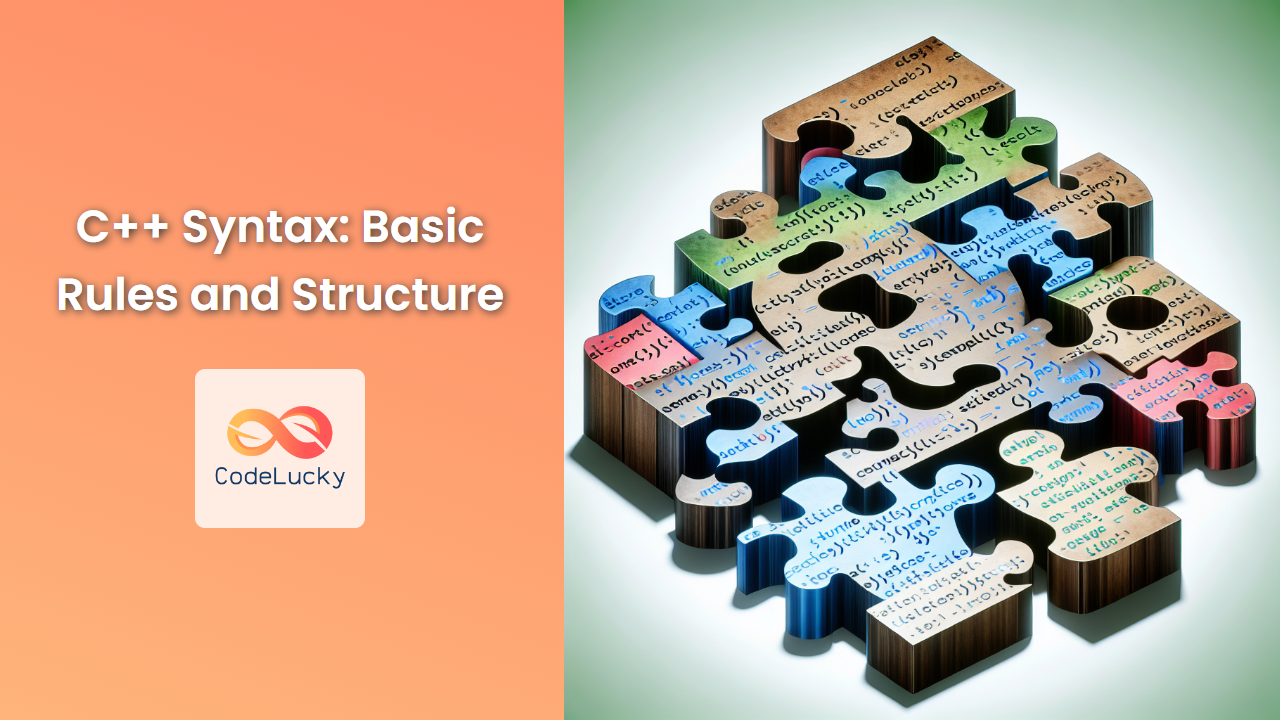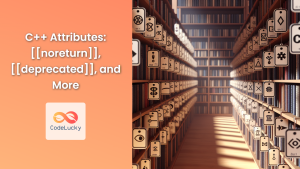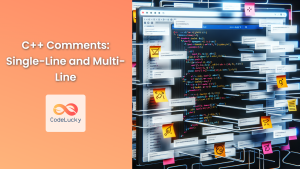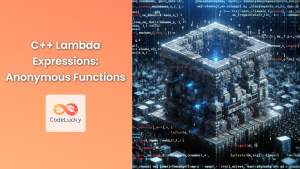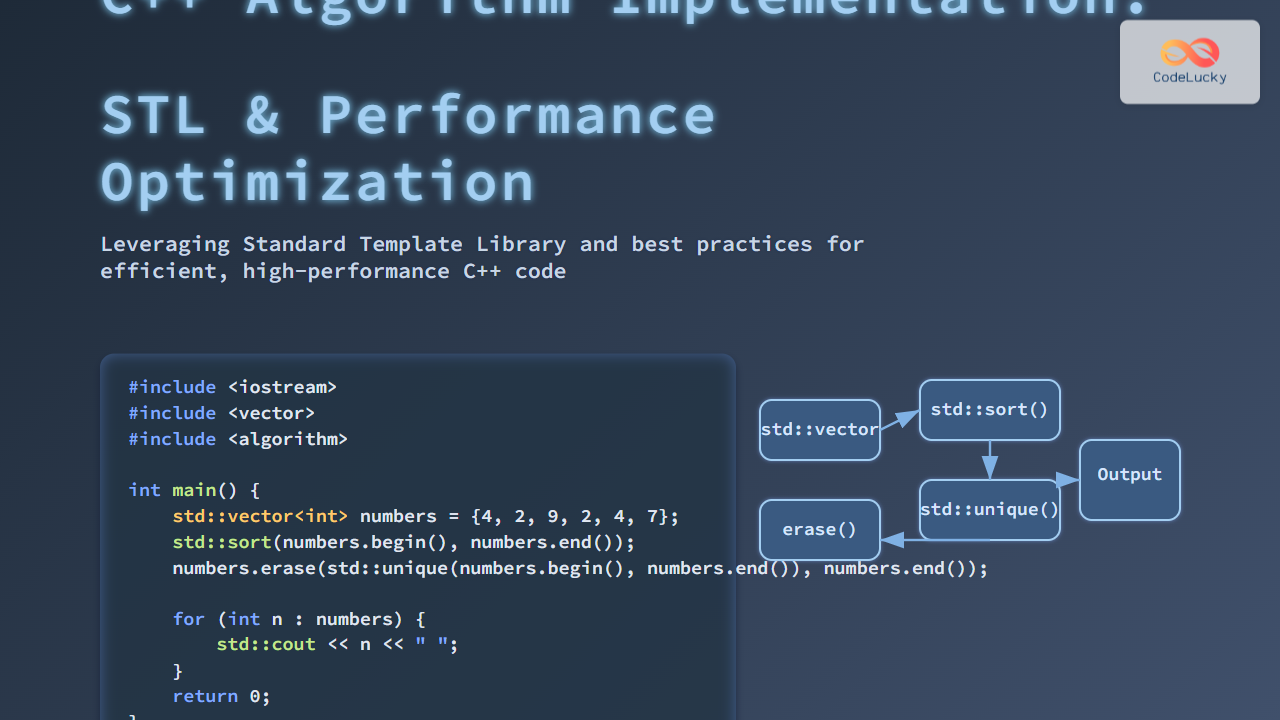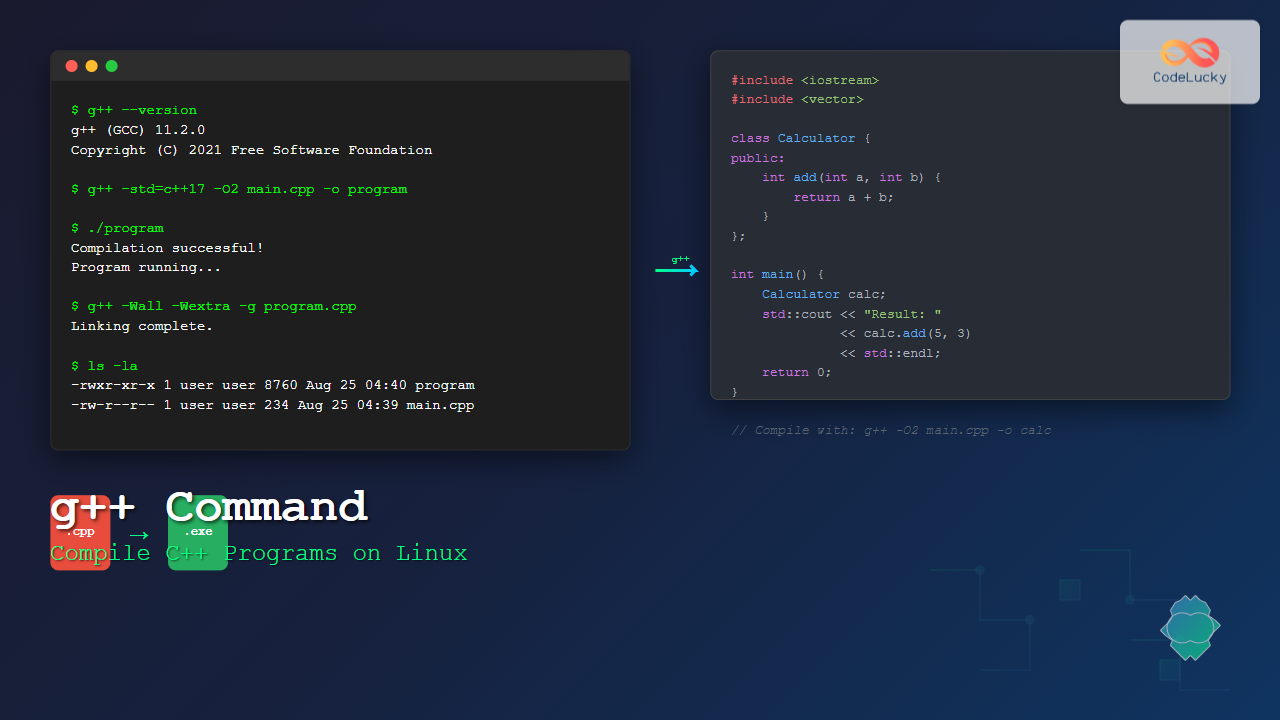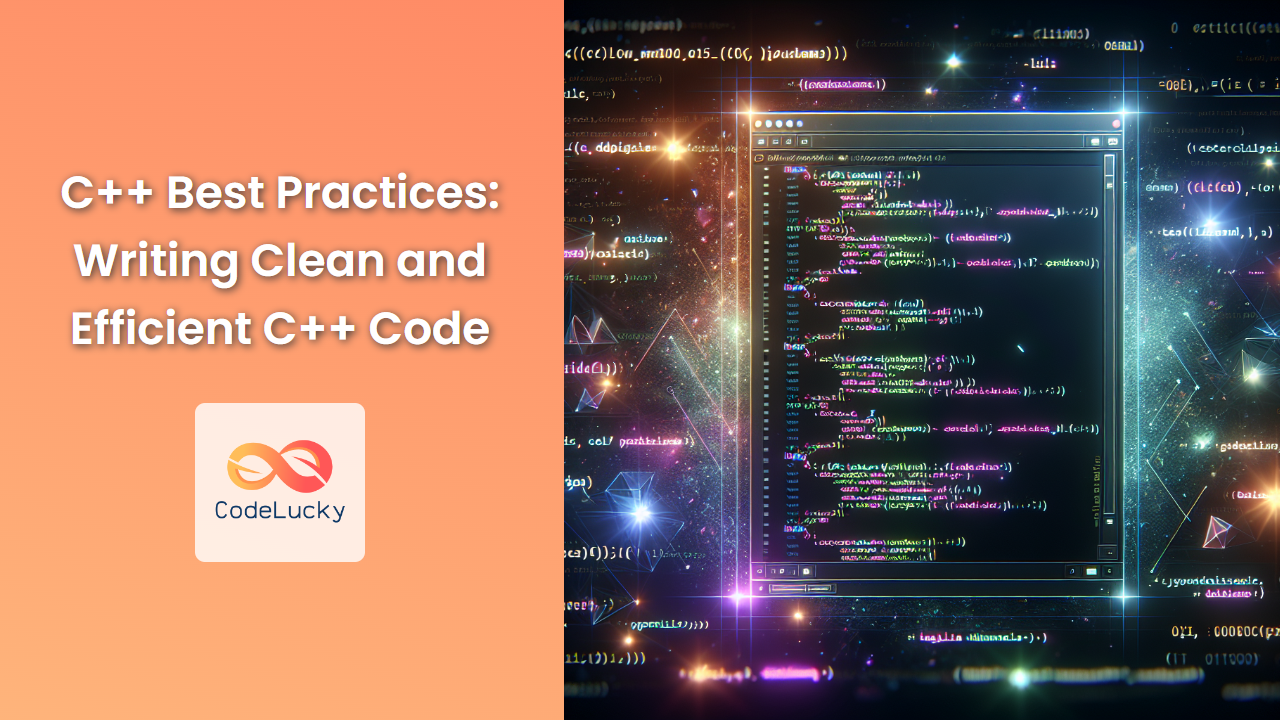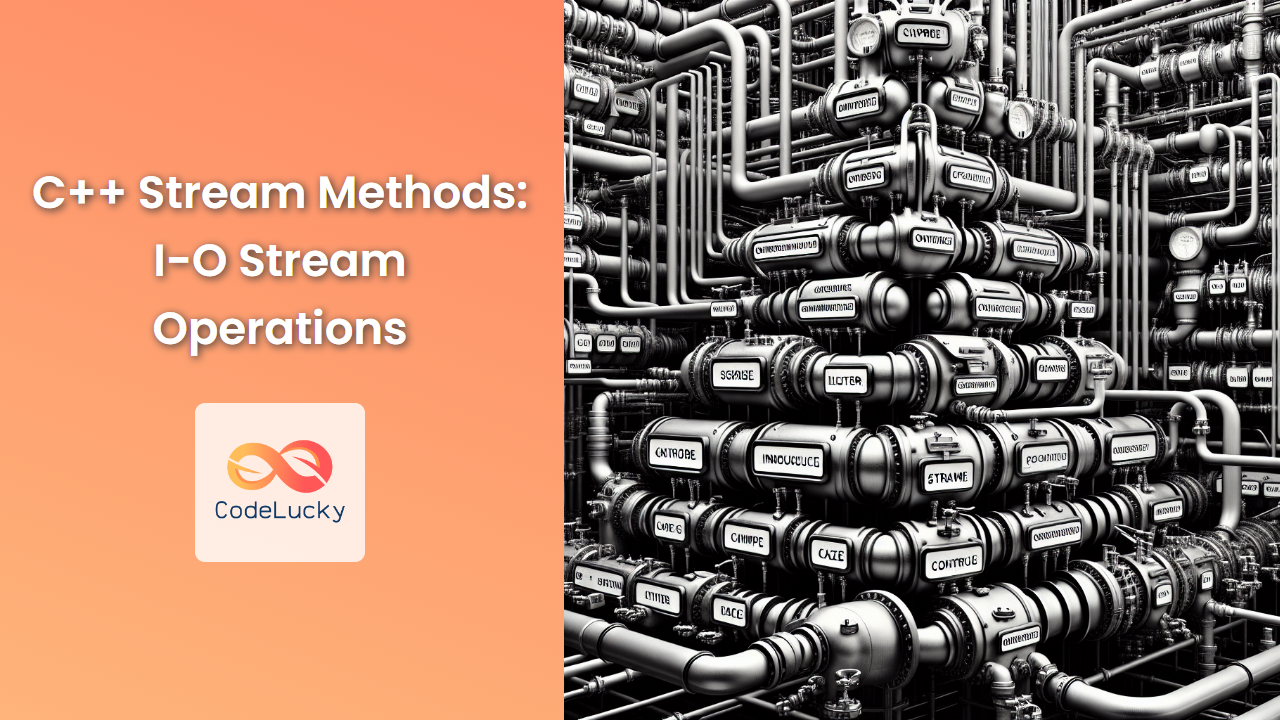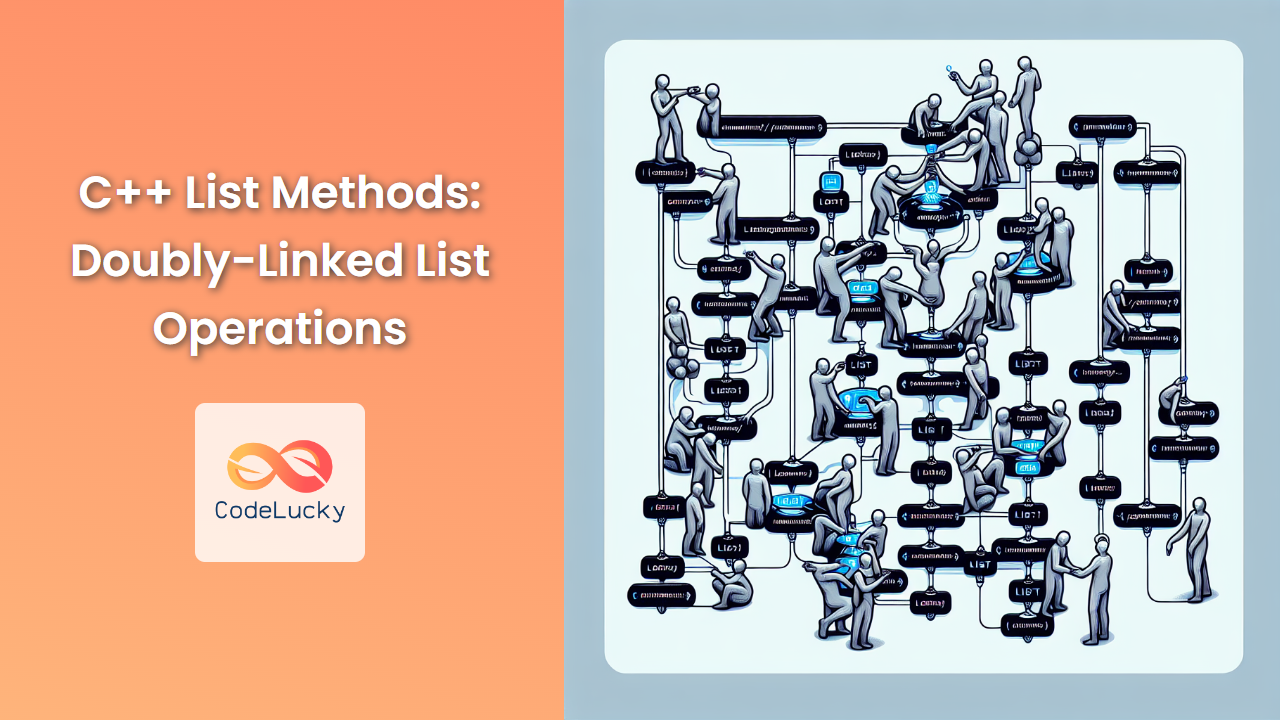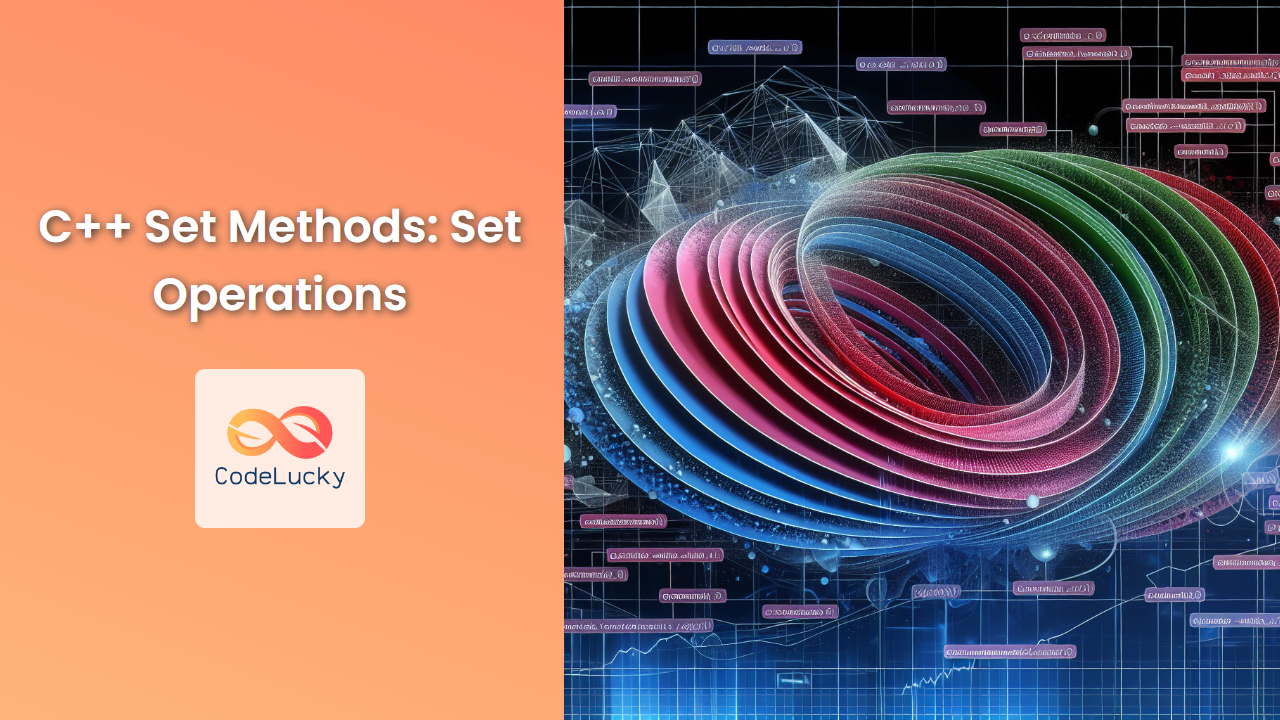C++ is a powerful and versatile programming language that has stood the test of time. Its syntax, while initially intimidating to newcomers, provides a robust foundation for building complex software systems. In this comprehensive guide, we'll dive deep into the basic rules and structure of C++ syntax, equipping you with the knowledge to write clean, efficient, and effective C++ code.
The Building Blocks of C++ Syntax
At its core, C++ syntax is composed of several key elements that work together to create functional programs. Let's explore these building blocks in detail.
1. Statements and Semicolons
In C++, a statement is a basic unit of code that performs a specific action. Most statements in C++ end with a semicolon (;). This punctuation mark tells the compiler that the statement is complete.
int x = 5; // This is a statement
cout << "Hello, World!"; // This is another statement
🔑 Key Fact: Forgetting to end statements with semicolons is one of the most common syntax errors in C++.
2. Comments
Comments are crucial for code readability and maintenance. C++ supports two types of comments:
- Single-line comments: Begin with
//and continue to the end of the line. - Multi-line comments: Begin with
/*and end with*/.
// This is a single-line comment
/*
This is a
multi-line comment
*/
💡 Pro Tip: Use comments to explain complex logic or to provide context, not to state the obvious.
3. Identifiers
Identifiers are names given to entities such as variables, functions, classes, etc. C++ has strict rules for naming identifiers:
- Must begin with a letter (a-z, A-Z) or underscore (_)
- Can contain letters, digits (0-9), and underscores
- Are case-sensitive
- Cannot be a keyword
int validVariable; // Valid identifier
int 123invalid; // Invalid: starts with a digit
int valid_123; // Valid identifier
int VALID_VAR; // Different from validVar (case-sensitive)
4. Keywords
Keywords are reserved words in C++ that have special meanings. They cannot be used as identifiers. Some common keywords include:
int, float, double, char, if, else, for, while, class, return
🔍 Fun Fact: C++20 introduced several new keywords, including concept and requires, enhancing the language's capabilities.
5. Data Types
C++ is a strongly-typed language, meaning every variable must have a defined data type. Here are some fundamental data types:
| Data Type | Description | Size (bytes) | Example |
|---|---|---|---|
| int | Integer | 4 | 42 |
| float | Floating-point | 4 | 3.14f |
| double | Double precision float | 8 | 3.14159 |
| char | Single character | 1 | 'A' |
| bool | Boolean | 1 | true |
int age = 30;
float pi = 3.14f;
char grade = 'A';
bool isStudent = true;
6. Variables and Constants
Variables are containers for storing data values. They must be declared before use:
int count; // Declaration
count = 10; // Initialization
// Or combine declaration and initialization
int score = 95;
Constants are variables whose values cannot be modified after initialization:
const double PI = 3.14159;
PI = 3.14; // Error: cannot modify a constant
Operators in C++
Operators are symbols that tell the compiler to perform specific mathematical or logical operations. C++ provides a rich set of operators:
1. Arithmetic Operators
| Operator | Description | Example |
|---|---|---|
| + | Addition | 5 + 3 = 8 |
| – | Subtraction | 5 – 3 = 2 |
| * | Multiplication | 5 * 3 = 15 |
| / | Division | 15 / 3 = 5 |
| % | Modulus (remainder) | 17 % 5 = 2 |
2. Comparison Operators
| Operator | Description | Example |
|---|---|---|
| == | Equal to | 5 == 5 (true) |
| != | Not equal to | 5 != 3 (true) |
| > | Greater than | 5 > 3 (true) |
| < | Less than | 5 < 3 (false) |
| >= | Greater than or equal to | 5 >= 5 (true) |
| <= | Less than or equal to | 5 <= 3 (false) |
3. Logical Operators
| Operator | Description | Example | ||||
|---|---|---|---|---|---|---|
| && | Logical AND | (5 > 3) && (3 < 5) (true) | ||||
| \ | \ | Logical OR | (5 < 3) \ | \ | (3 < 5) (true) | |
| ! | Logical NOT | !(5 == 5) (false) |
int a = 5, b = 3;
bool result = (a > b) && (b != 0); // true
Control Structures
Control structures allow you to control the flow of your program's execution.
1. If-Else Statements
The if-else statement allows you to execute different code blocks based on a condition:
int age = 20;
if (age >= 18) {
cout << "You can vote!";
} else {
cout << "You're too young to vote.";
}
2. Switch Statements
Switch statements provide a way to execute different code blocks based on the value of an expression:
char grade = 'B';
switch (grade) {
case 'A':
cout << "Excellent!";
break;
case 'B':
cout << "Good job!";
break;
case 'C':
cout << "You passed.";
break;
default:
cout << "Invalid grade";
}
3. Loops
Loops allow you to execute a block of code repeatedly.
For Loop
for (int i = 0; i < 5; i++) {
cout << i << " ";
}
// Output: 0 1 2 3 4
While Loop
int count = 0;
while (count < 5) {
cout << count << " ";
count++;
}
// Output: 0 1 2 3 4
Do-While Loop
int num = 0;
do {
cout << num << " ";
num++;
} while (num < 5);
// Output: 0 1 2 3 4
Functions
Functions are reusable blocks of code that perform a specific task. They help in organizing code and promoting reusability.
// Function declaration
int add(int a, int b);
// Function definition
int add(int a, int b) {
return a + b;
}
// Function call
int result = add(5, 3); // result = 8
🔧 Best Practice: Always declare functions before using them, either through function prototypes or by defining them before they're called.
Classes and Objects
C++ is an object-oriented programming language, and classes are the foundation of OOP in C++.
class Rectangle {
private:
int width, height;
public:
Rectangle(int w, int h) : width(w), height(h) {}
int area() {
return width * height;
}
};
// Creating an object
Rectangle rect(5, 3);
int area = rect.area(); // area = 15
Namespaces
Namespaces provide a way to organize code into logical groups and prevent name collisions:
namespace Mathematics {
int add(int a, int b) {
return a + b;
}
}
namespace Physics {
int add(int force1, int force2) {
return force1 + force2;
}
}
int result1 = Mathematics::add(5, 3);
int result2 = Physics::add(10, 20);
Error Handling
C++ provides mechanisms for handling errors and exceptional situations:
#include <stdexcept>
double divide(int a, int b) {
if (b == 0) {
throw std::runtime_error("Division by zero!");
}
return static_cast<double>(a) / b;
}
try {
double result = divide(10, 0);
} catch (const std::exception& e) {
std::cerr << "Error: " << e.what() << std::endl;
}
Memory Management
C++ gives you direct control over memory allocation and deallocation:
// Dynamic memory allocation
int* ptr = new int;
*ptr = 10;
// Remember to deallocate when done
delete ptr;
// Dynamic array allocation
int* arr = new int[5];
// Deallocate array
delete[] arr;
⚠️ Warning: Always remember to deallocate dynamically allocated memory to prevent memory leaks.
Conclusion
C++ syntax, while extensive, provides a powerful toolkit for creating efficient and robust software. By mastering these basic rules and structures, you'll be well on your way to becoming a proficient C++ programmer. Remember, practice is key to internalizing these concepts and applying them effectively in your projects.
As you continue your C++ journey, you'll discover more advanced features and techniques that build upon these fundamental syntactic elements. Keep exploring, keep coding, and most importantly, enjoy the process of creating with C++!

